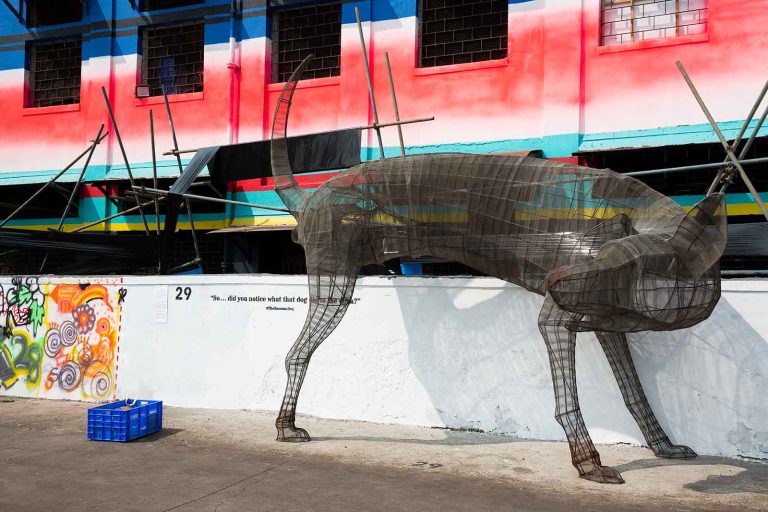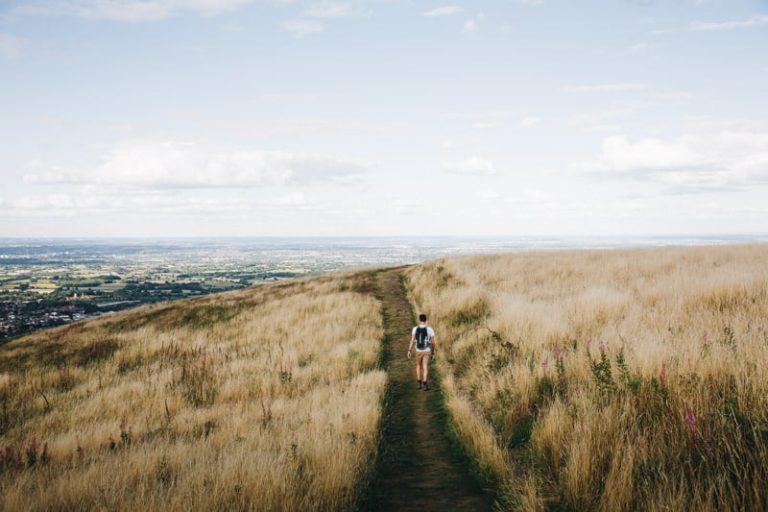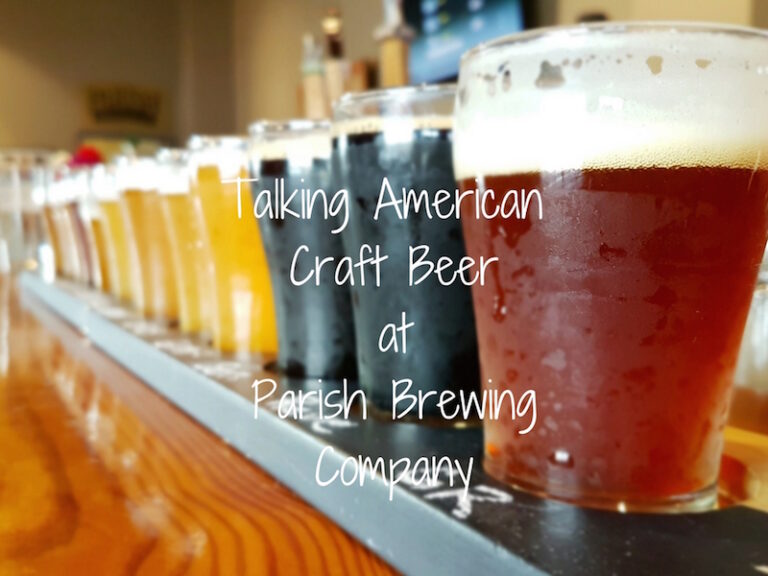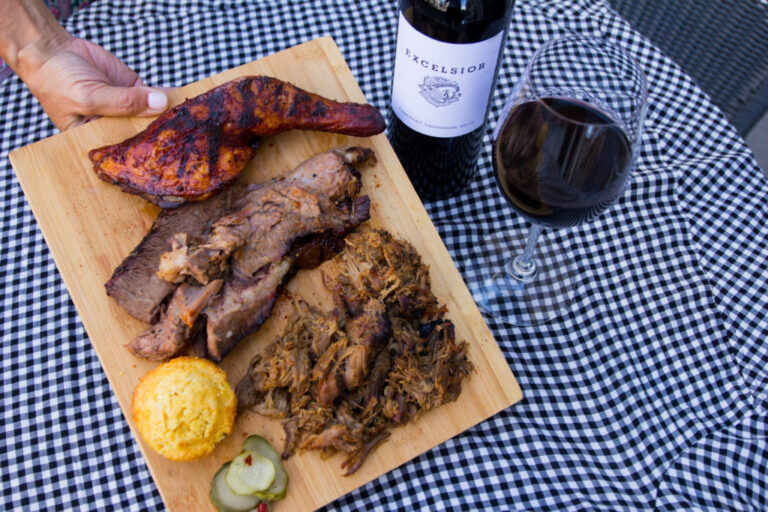Everyone still thinks Colombia is dangerous. They think of Pablo Escobar, they’ve heard about drug cartels, they’ve seen Narcos on Netflix and think they know what Colombia is like today.
I get it. The cliche images from the past can take a long time to wash away. But trust me on this: traveling in Colombia is so much fun and it’s so much safer today. In fact, having done almost the entire Latin American “Gringo Trail”, I consider Colombia one of my top favorite backpacking countries.
Plan your Colombia backpacking trip
Why go backpacking Colombia?
Incredibly varied
Colombia just has it all: there are both the Caribbean and Pacific coasts (which are very different), the start of the Andes mountain range, and 40% of the country is covered by the Amazon Rainforest. Colombia’s cities have various climates and characters that make them highly worth exploring.
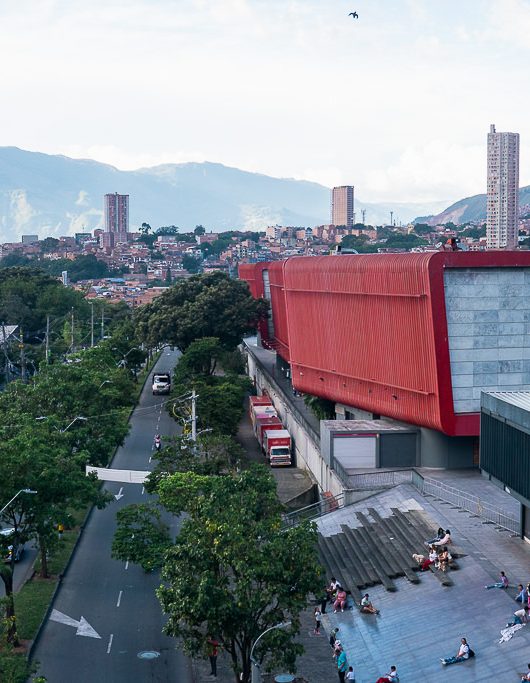

Variety is really Colombia’s strong point. Within its borders you’ll find anything from lush jungles to dusty deserts. Coastal areas often have an Afro-Caribbean vibe, while higher elevation areas may remind you of indigenous mountainous regions in Peru or Bolivia. Thanks to its geography and diversity you can almost think of Colombia as a South America taster menu.
One thing Colombia arguably does not have: some kind of singular iconic bucket list sight, like Machu Picchu in Peru or Iguazu Falls in Brazil. Some travelers may find this disappointing but I think it’s an advantage: not having all the attention on one overtouristed hotspot makes the Colombia backpacking trail more spread out and more relaxed.
Amazing biodiversity
Did you know Colombia has the world’s second highest biodiversity? (Second only to Brazil, a country 7 times larger!)
The wildlife and nature experience are really on another level. Consider treks like the Lost City Trek, whale watching on the Pacific Coast, or birdwatching in Minca. A lot of people associate Costa Rica with nature activities but Colombia is secretly amazing for ecotourism as well.


It’s not unusual to see a bunch of monkeys in the jungle or a toucan flying past. One time I was taking a long nap on the bus and just as I woke up, a hummingbird hovered beside my window and looked at me as though to say, “hey buddy, remember you’re still in beautiful Colombia?”. It really can feel a bit like paradise at times.
Bursting with culture
The cities of Medellín and Bogota are among the most booming and cosmopolitan on the continent, filled with street art, salsa dance, and colorful culture.
Of course, it’s not surprising that many backpackers want to learn about Colombia’s often dark history — and Pablo Escobar tours are definitely a thing. But you’ll be equally intrigued by life in Colombia today.
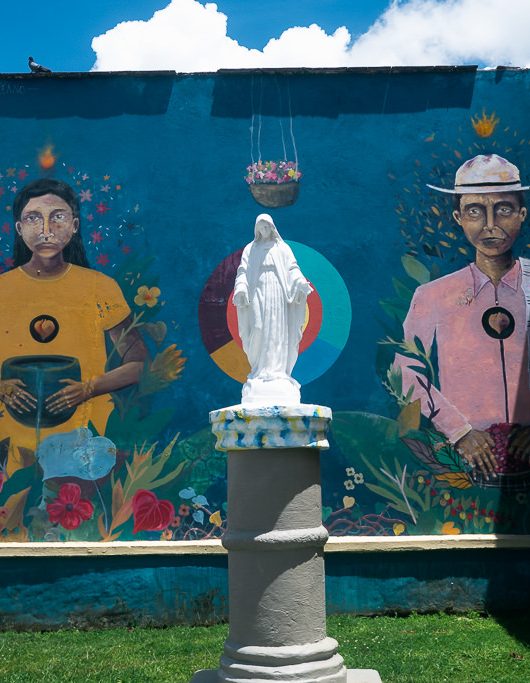
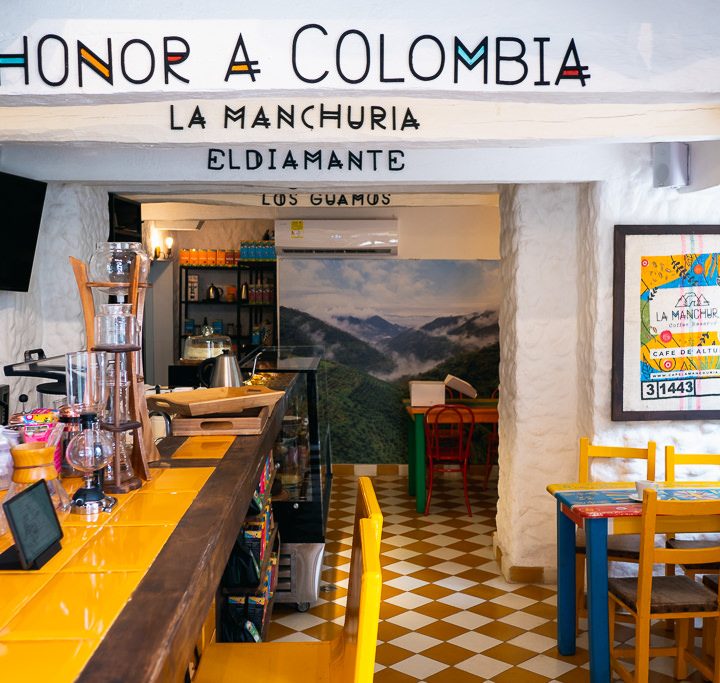
Culture and coffee are two ‘c’s that I associate closely with Colombia. The other ‘c’, cocaine, much less so. Many Colombians despise the drug because of what it has done to their country. So, it’s not really a thing unless you were to specifically seek it out. There is enough wholesome cultural interest to satisfy anyone, so coming for drugs (and quite a crappy drug, let’s be honest) is definitely not what traveling Colombia is about.
Easy to travel on a budget
Colombia is not the cheapest in South America but also not the most expensive. It’s actually a better deal than it used to be: the exchange rate with the US Dollar or Euro in recent years has made it about 30% cheaper than it was 7 or 8 years ago.
You can get some great value for money in Colombia. Hostels and guesthouses are quite affordable and food is cheap, especially if you find the truly local places.
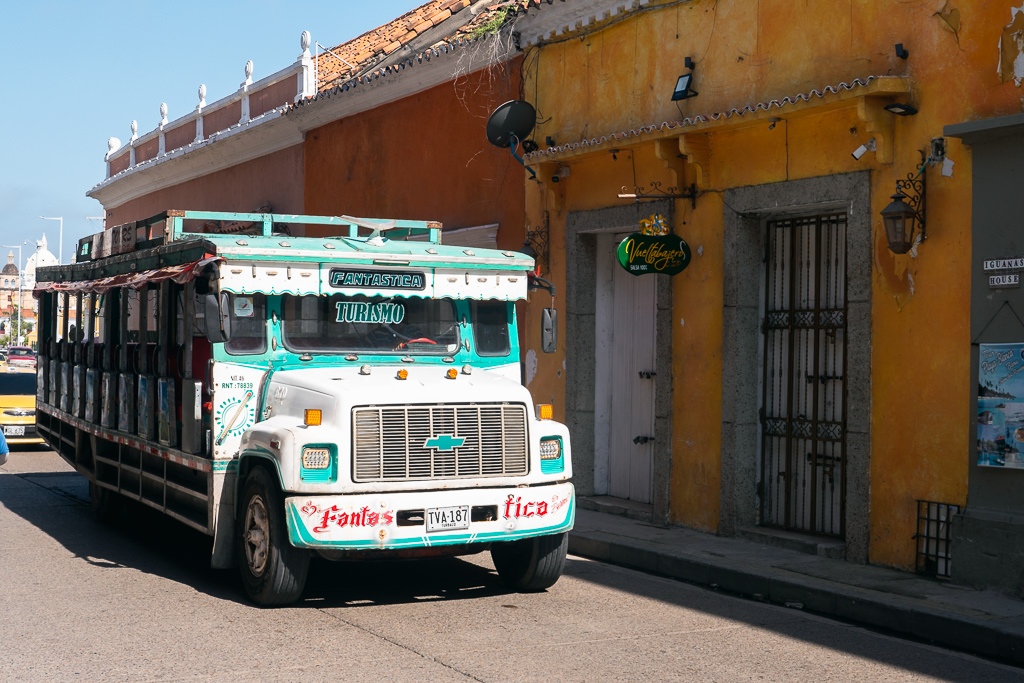
A set meal for lunch including soup, a main dish with meat and many sides, and fresh fruit juice will typically cost about 10,000 COP, which is about $2.50. Not bad! Hostel dorm beds typically cost about 50,000 COP, and it’s 100,000 COP and up for a basic private room.
Certain experiences like the Lost City Trek (should you wish to do it) can be fairly expensive, but day-to-day you can manage on a backpacker budget quite easily.
Backpacking routes
Unlike some other countries, there is less of a set backpacker route in Colombia, with different travelers going to different places (or in a different order). Choosing your route can also often be hair-pullingly difficult.
There are just too many great places to go to. If you’re feeling overwhelmed… I’ve been there!
Some countries just make it easier to see the highlights in a couple of weeks. If you’re backpacking Belize you really need just a week; backpacking Nicaragua takes 3 weeks at the most. But Colombia is very big and has such a wealth of destinations that it either takes more time or just more deliberate choices for where to go.
I backpacked through Colombia for 3 months and still felt like I wasn’t done. I can easily see at least another 3 months of experiences that I’d love to come back for.
But that’s also what makes this such a great destination. You get to choose from a lot of different possibilities. It means that different backpackers can end up having somewhat different trips in Colombia.
Because there are so many routes you could take, I wrote this waaaay-too-comprehensive guide to creating your own Colombia itinerary, which also has several sample itineraries you can follow.
It’s a good idea to have a rough idea of the trip you’d like to do, but leave some room to improvise during your trip. You may want to stay longer or shorter in places depending on how much you like them.
Where to travel in Colombia
When looking at a map of Colombia, you’ll quickly notice that most travel destinations are in the west and north.
Why? Well, it’s simple: the eastern half of Colombia is mostly covered by the Amazon rainforest. These parts are not as easily accessible. Most of the travel destinations are in the more populated areas.
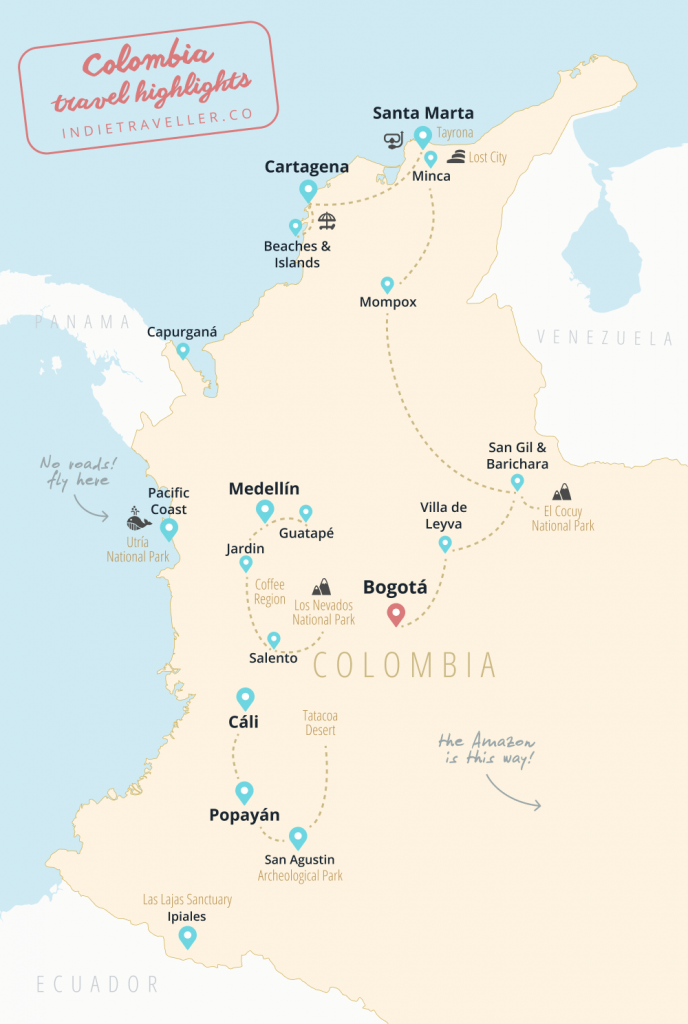
In the north of Colombia, you’ll find the old colonial city of Cartagena. It has long been the country’s main tourist draw (even during the bad years, as cruise ships could still dock there). It’s a beautiful place with an old center, albeit touristy and more expensive than elsewhere in Colombia.
The city of Santa Marta is not so notable in itself, but it makes for an excellent launching point for exploring the beautiful Tayrona National Park or for doing the Lost City trek. The nearby town of Taganga is Colombia’s leading destination for scuba diving and a bit of a backpacker hub. The small town of Minca, also near Santa Marta, is a laidback backpacker destination among the jungles and waterfalls.
In the center is San Gil, Colombia’s adventure sports capital. Go here for paragliding, wild water rafting, caving, and more. The center of Colombia is also home to its second-largest city of Medellín, a fascinating place that you definitely shouldn’t skip.
In the south are the capital Bogota, Colombia’s coffee region, the city of Cali (famous for its obsession with salsa), and Tatacoa, a desert where years of erosion have created some unusual landscapes.
The Amazon at the heart of Colombia is super remote and even home to some uncontacted indigenous tribes. If you want to go into the Amazon, flying to Leticia is the most reliable option. This town also has border connections with Peru and Brazil.
How much time do you need?
Honestly as much time as you have. But if you have at least 2 or 3 weeks, you can do a fun route that includes a lot of places.
If you are traveling long-term, then know that the standard visa-on-arrival will give you 90 days in Colombia, so you really can go slow if you want to.
I first got to know Colombia while I was in the midst of a 2-year round-the-world backpacking trip. I loved Medellin so much that I stayed for 4 weeks just in this city, living a mini-life there for a while. I met some backpackers who did the same but in Cali, taking salsa classes every single day for weeks on end while diving into the local dancing scene. This is just to warn you that you can easily get stuck!
In general Colombia is a destination you can take your time in as it has loads of variety and a great atmosphere.
Accommodation in Colombia
What’s the hostel scene like?
The hostel scene in Colombia is extremely good. The quality of the hostels is very high across the board and it feels like they are trying to outdo each other with unique concepts or just having a great vibe.
If you are into younger/party hostels you can find many of them in the cities, particularly Medellin. Some party hostels also exist in Palomino on the coast and in other areas.
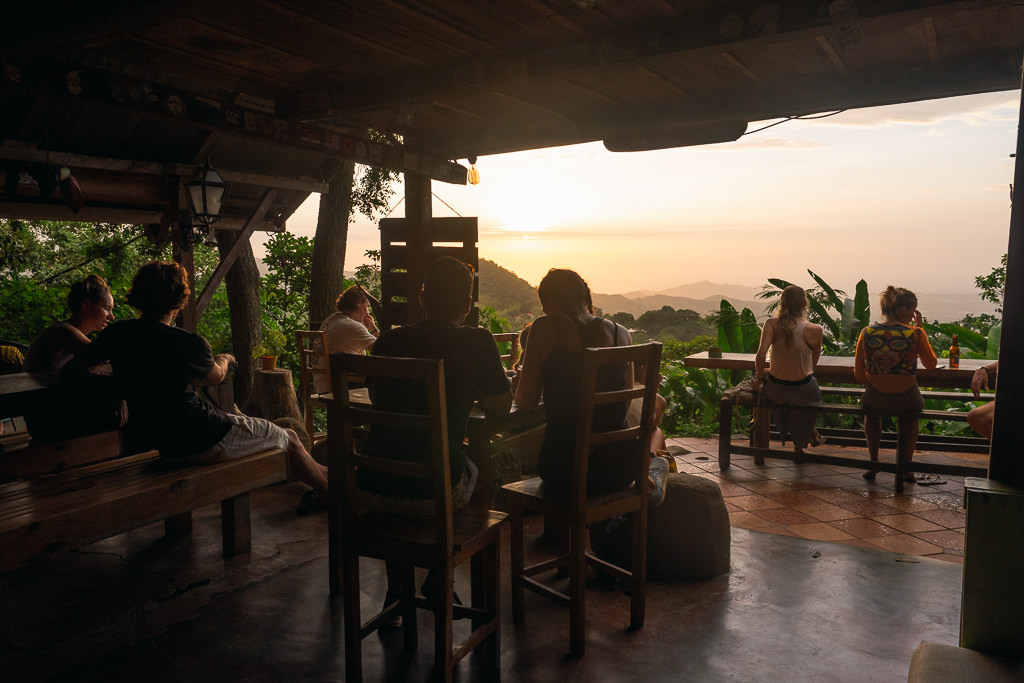
Most hostels are chill/social traveler hostels though with guests’ ages spanning a fairly wide range. Some hostels (for example in Minca) are more like ecolodges, offering individual jungle huts instead of dorms. You can find some specific advice on the best hostels in Medellin and the best hostels in Bogota.
Amazing hostels in Colombia
$$ Bogotá
Hostal R10
My favorite hostel in La Candelaria, the old town of Bogota.
$$ Medellin
Black Sheep Hostel
Friendly, homely hostel in popular Poblado area. Has on-site Spanish school & chill atmosphere. 15 min walk to the most fun nightlife area
$$ Medellin
Casa Kiwi
Also in Poblado; has a pool and is more party oriented than Black Sheep.
$$ Cartagena
El Viajero
Cozy hostel with narrow central courtyard making it super easy to meet people. Dorms and private rooms.
$$ Salento
Viajero Hostel
Hostel in a colonial house with epic views of the mountains
Should you book ahead? Well, if you’re not picky you can always find a bed, but the top-rated hostels do often book out completely. For example, Costeno River Hostel in Minca is extremely well-rated and I found out it was 100% full for the next few weeks when I tried to stay there. If you book with Hostelworld they usually let you cancel for free up to 24 hours before your stay, letting you still travel in a flexible way.
Best hostel chains: If you’re looking for slightly more premium hostels, then check out Selina, a hostel chain that is very active in Colombia. There are a whopping three (!) Selinas in Bogota alone (check out the main one in La Candelaria). The Selina in Quindo caught my eye as it’s the middle of the coffee country, as well as the one in Villa de Leyva which is in a beautifully restored colonial building. The Selina formula is to basically offer hotel-like amenities while still trying to maintain somewhat of a hostel-like atmosphere.
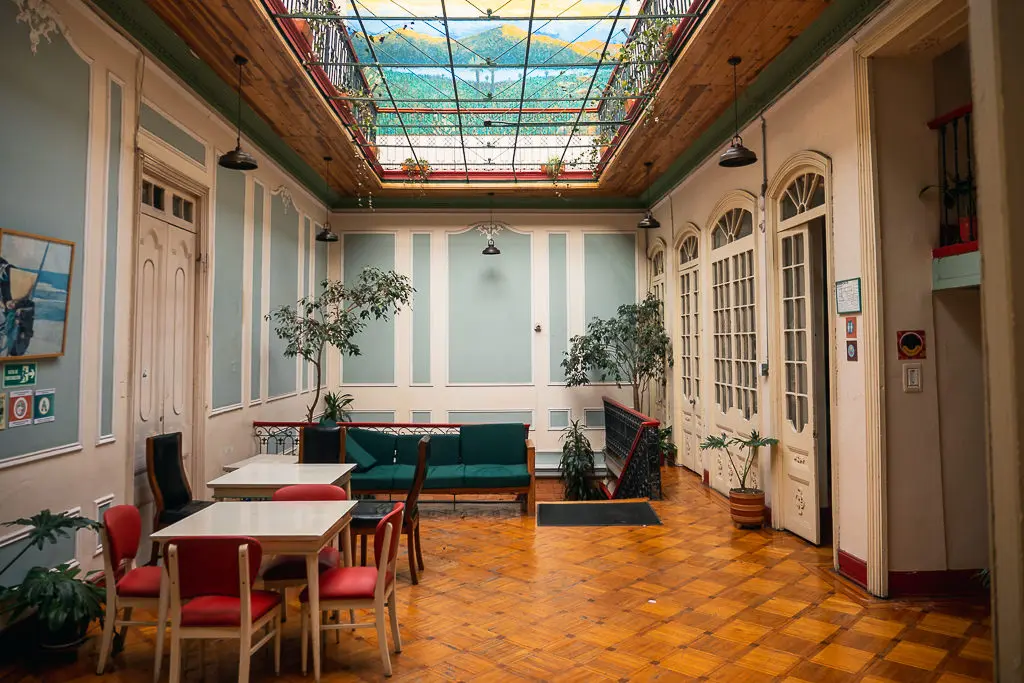
My favorite hostels: Personally, I prefer staying in smaller independent backpacker hostels. Some of my favorites include Black Sheep Hostel and The Wandering Paisa in Medellin (both are a bit like traveler institutions and great for making friends), Casa Loma in Minca, Utria Hostel in Bahia Solano, and Viajero Hostel in Cartagena.
Unique concept hostels: There are a couple of very unique hostels in Colombia. One that always gets mentioned is Casa en el Agua, a hostel near the San Bernardo Islands literally built on the water. You can’t book it through any platforms anymore; only via an online form, with payment only via PayPal, and availability only updating every 60 days. (I guess you have to be dedicated.)

Another ‘concept hostel’ can be found south of Medellin: Casa en el Aire, which is built on a cliffside where you can chill in hammocks suspended over a valley. Pretty crazy! They get their business through word-of-mouth only; you can contact them via Whatsapp.
Eco hostels: Many hostels are basically in the style of ecolodges or are in converted fincas (coffee farms). The Colombian hostel chain Masaya has two incredible eco-hostels: the Coffee Reserve La Manchuria and the Masaya San Agustin. In Tayrona, check out the Viajero Tayrona Hostel & Ecohabs. Although quite secluded, these accommodations can be a destination in and of themselves.
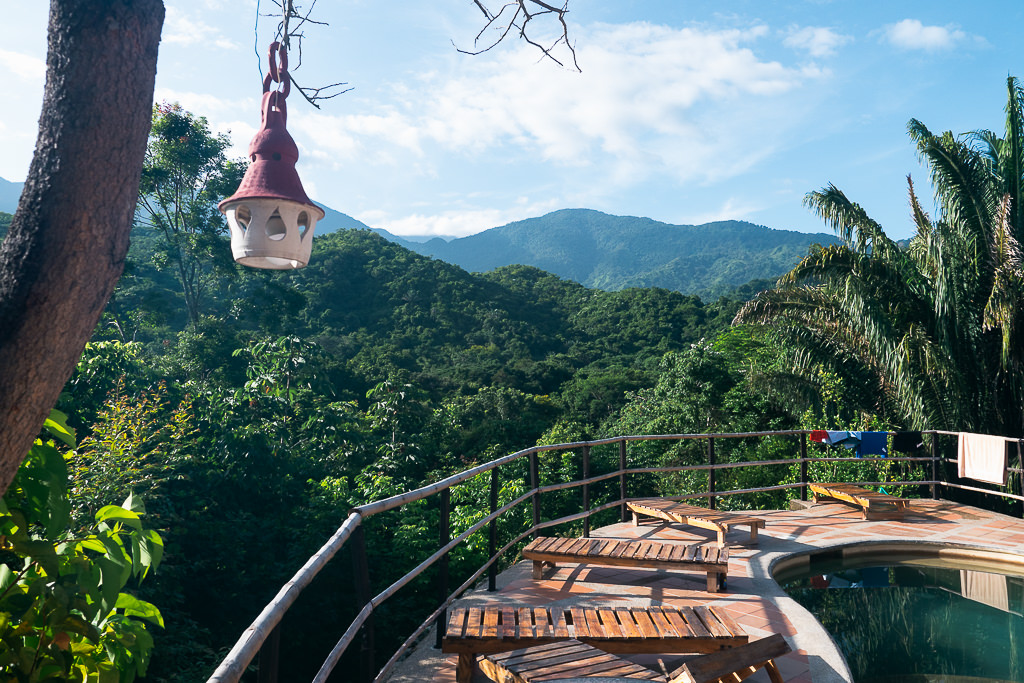
Another one I can highly recommend is Finca Carpe Diem in the Paso del Mango valley, which is just north of the major backpacker hub of Minca. It’s one the highest-scoring hostels in all of Colombia so this is another one worth putting in a reservation for if you want the chance to stay there. The view from the upper swimming pool is nuts.
Apart from the hostels, there are many great local hotels and guesthouses. I usually stay about half my time in hostels and the other half in hotels or guesthouses. It’s best to use Hostelworld for hostels, but use Booking.com to find smaller (budget-friendly) hotels.
Is Colombia safe?
The safety situation in Colombia is absolutely nothing like what it was during the bad years in the 1980s or 1990. Colombia travel guides from at least a decade ago may still warn of kidnapping risks or drug gang violence but modern editions are free of such warnings.
For the most part and purely from the perspective of a tourist, it’s just a normal South American country to travel through (much like Peru or Ecuador). Still, the old image persists.
Of course, as with many countries in South America, you do need to remember to pack your brains. So… maybe don’t walk into that dark alley at night. But if you travel responsibly, you’ll find that Colombia is just an incredible backpacking destination.

I get the sense that Colombians are actually a bit sick of constantly being asked about safety by tourists — in the same way that Germans have that “sigh, here we go again” look on their faces when someone mentions the Nazis. They’re probably a bit tired of it.
Then again, Colombia is definitely not a crime-free paradise — and in some specific regions, it can be worse than other South American countries.
Here are some things to know in order to travel responsibly:
- Check safety guides for any ‘bad areas’ and simply don’t go to them. They’re mostly areas close to the borders with Venezuela, Ecuador, and Panama, or very deep in the Amazon. I like the safety map provided by the UK foreign office as it’s very clear. Don’t bother with the US State Department report for Colombia which uses an excessively paranoid and alarmist tone. For a more balanced take, check out the Australian, UK, Canadian, or other reports.
- Do take a bit more care in the cities; don’t show off expensive gear, carry only cash you need for the day, and take official taxis (or use ride-hailing apps), particularly at night. Ask your hostel or hotel staff if there are any bad neighborhoods in the city, just to be sure you don’t wander off somewhere you shouldn’t wander.
- Do take extra care in the nightlife too; don’t get too drunk, keep your nose clean, and don’t accept drinks or cigarettes from strangers. Drugging/spiking is sadly known to occur; this is important to know for girls but especially for boys. If a Colombian woman in a club or on a Tinder date seems extremely and unrealistically motivated to get in your room right away, be very alert as this could mean waking up with a very bad hangover and/or amnesia and all your shit being stolen. If it feels like you’ve inexplicably become an irresistible chick magnet in Colombia, be very suspicious and immediately switch control away from your engine room and back to the bridge (i.e. your brain).
- Colombia is generally a country where it’s better to take public transit like coaches/buses than to self-drive (unless you’re well-informed and know what you’re doing). Car rentals are very expensive in Colombia anyway.
While these tips will help keep you safe, it’s still wise to take out a good travel insurance plan for your trip. That way, you won’t ever get financially ruined by hospital bills, theft, or emergency expenses should anything unfortunate happen. It will also provide you with a trusted helpline you can call or text if needed.
I use Heymondo Travel Insurance, which is backed by AXA (one of the world’s biggest insurers). They cover almost any kind of sport or adventure activity you might do in Colombia, such as paragliding, horseriding, or trekking, as well as full coverage for a wide range of eventualities.
I’ve been using and recommending Heymondo for several years now because they simply have a better offering and for less money than other brands like World Nomads. You can get a quote for travel insurance at Heymondo here.
Psst, do you have insurance for Colombia?
Travel Advice

Travel insurance will cover you for theft, medical expenses, cancellation, and more. Heymondo offers great coverage, COVID-19 included, zero deductibles, and an app with 24/7 assistance & doctor chat.
Backpacking Colombia tips
Travel costs
Colombia is not an ultimate cheapie like some other Latin American countries (e.g. Guatemala, Nicaragua, Peru or Bolivia). However, it’s also not nearly as expensive as some others (e.g. not anywhere close to Costa Rica).
While everything depends on your personal travel style, I recommend budgeting around $40 a day when traveling as a backpacker. If you’re frugal, you can do it for about $30 a day, but it’ll probably involve cooking some of your own meals and avoiding any day tours for the most part.
Budgets are all a bit dependent on the currency exchange rates which fluctuate over the years. In Colombian pesos, consider a daily backpacker budget of around 130,000 – 180,000 COP.
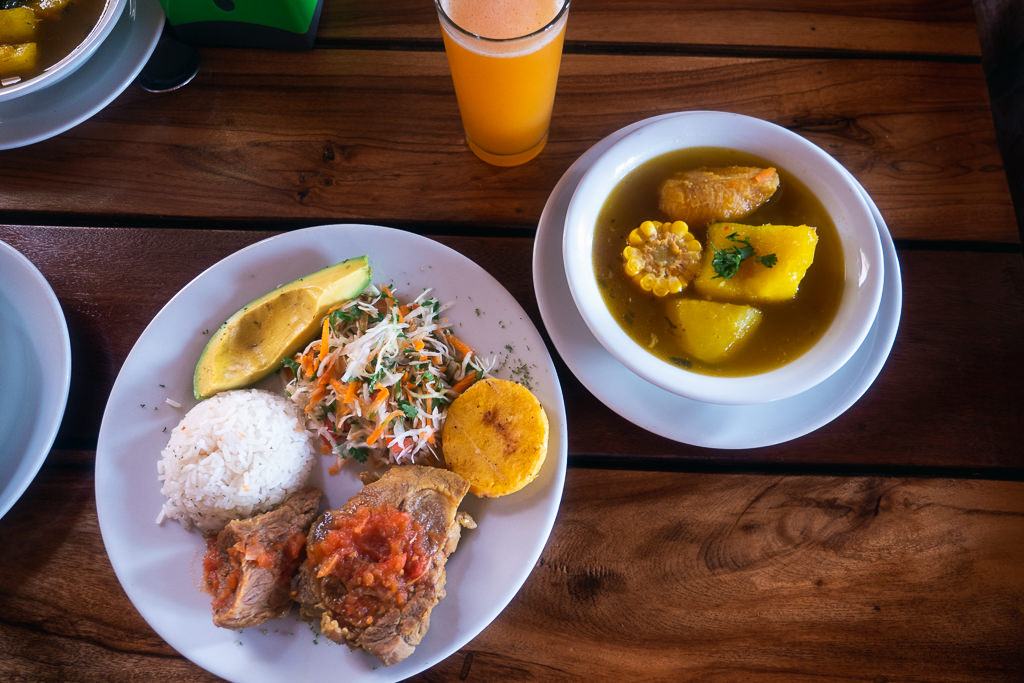
Here are a few money-saving tips:
- Try to keep your itinerary compact so you spend less money on transportation (it’s much cheaper on average to travel one region than trying to see every corner of Colombia).
- Avoid tours and try doing things yourself; for example, often it’s possible to hike to a waterfall instead of taking a paid organized tour
- Stay in hostels with kitchens and make your own meals
- Make lunch your main meal of the day and look for ‘platos del dia’ or ‘menu executivos’. These offers typically include a hearty soup, meat with several sides, and a fresh fruit juice for about 10,000 COP.
- Contact hotels directly and ask for the best deal they can offer if you book through them. I got a room almost 50% cheaper than the Booking.com price by just showing up and asking. (This hack won’t work with hostels so much.)
- Always ask locals about the local prices. Things may be much cheaper than you realize! In a local coffee town, I had a coffee and croissant for just 1,000 COP. It was so low I actually thought they had made a mistake. On the other hand, shops sometimes cheekily charge foreigners more, so inform yourself of the real prices.
The favorable exchange rate with currencies like USD and EUR in recent years has made Colombia more of a bargain than it used to be, so now is quite an advantageous time to travel there.
Do you need to know Spanish?
You’ll find that most people in Colombia do not speak English, but you can still survive just fine without Spanish. Some hostel/hotel staff and some of the tour guides may speak English. Not knowing the language will be limiting in many ways, but it’s entirely doable.
Knowing at least some basic Spanish will definitely enhance your experience. It’s worth taking some Spanish classes if you have the time. Language exchange events also offer fun opportunity to meet locals. Read more tips here: Do you need Spanish to travel in Latin America?
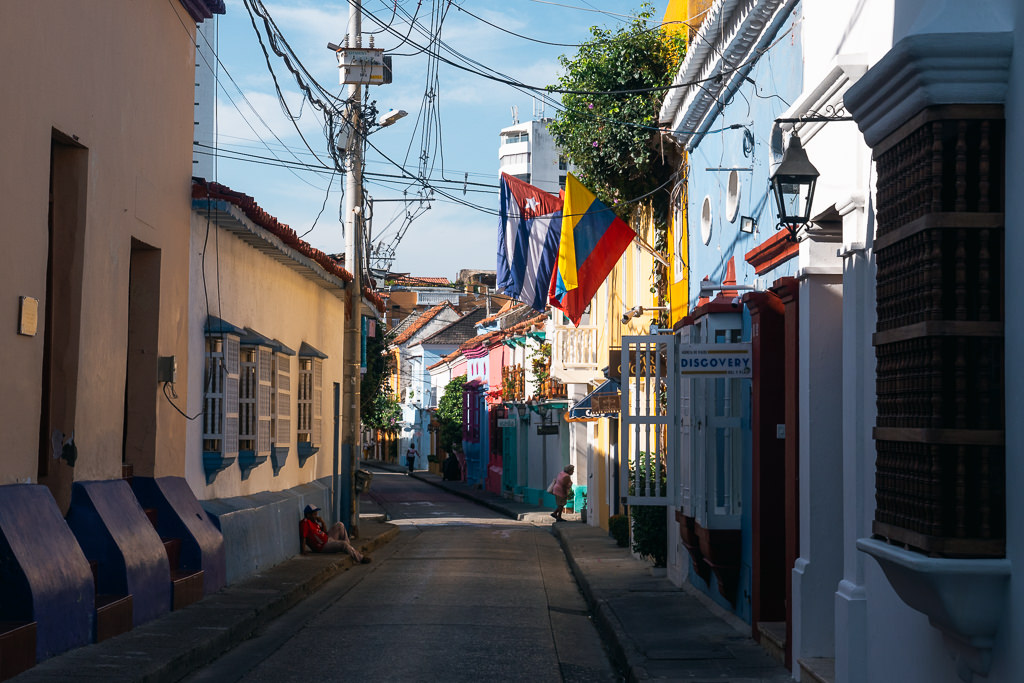
Internet in Colombia
Besides WiFi, it’s easy and cheap to get a local SIM card (if you feel the need to be online of course). Just get your SIM in an official shop in a larger city. For example, search for “tienda claro”. Claro is one of the main mobile service providers.
Once you have your prepaid data sim, you can always top it up in any small shop or grocery store that has the Claro sign (even in very small towns). Ask them to buy a ‘paquote’ (a top-up package) and get the seller to enter the code for you.
The internet is usually quite fast with at least 4G coverage. Less so in remote regions of course.
Getting to Colombia
To fly directly to Colombia, check your options on Skyscanner or Google Flights. There are numerous direct flights from around the world to Bogota. A few also go to other cities (for example Amsterdam to Cartagena is a direct route these days).
A nice option can be to fly via Miami. This airport is super well-connected internationally and with Colombia. I flew from Portugal (where I live) via Miami to Cartagena, then I ended my trip flying back from Cali to Miami and home. This avoided any backtracking within Colombia and enabled me to do a north-to-south overland route.
Are you on a bigger journey? Then keep in mind you can’t go to or from Panama overland! Well, you theoretically could if you were some crazy Bears Grylls-style survivor, but the so-called Darien Gap between Panama and Colombia has no roads at all and is bursting with smugglers and jaguars. The prudent thing to do is to fly across.
If you prefer not to fly, you can also sail from Panama to Cartagena or the other way around. This takes 4 or 5 days and you’ll need to find a bed on one of the private sailing boats that run this route. I did this journey and it was spectacular.
How to get around
The best way to get around on a backpacker budget is by bus or coach. Some can be booked online, but many you can only buy tickets for at the local bus terminal.
The bus stations can be a bit confusing at first as there’ll be loads of desks representing different bus companies and destinations. There won’t be a centralized departure board. Ask around if you’re unsure.
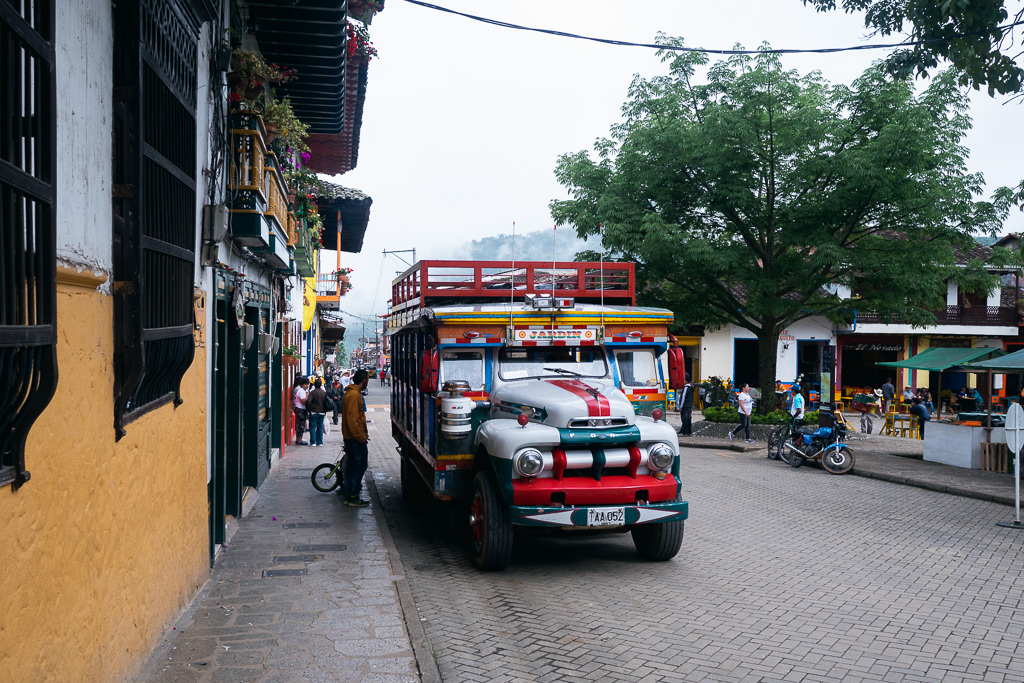
Besides the buses for long distances, you may use minivans, taxis, or moto-taxis for more local trips. The moto-taxis are especially fun; you’ll go on the back of the motorbike while your backpack will be in front between the wheel and the driver. They’re a cheap way to get around.
Keep in mind that in Colombia not everything may run 100% smoothly. Maybe your journey goes perfectly or maybe you’ll have some delays.
Or maybe you happen to be in Colombia exactly on the fiesta de Virgin Del Carmen, the patron saint of transportation — a day during which all the bus drivers are far too busy driving their decorated buses in zig-zag patterns across all available lanes, shooting fireworks from the windows, and honking continuously to get you anywhere you need to be in any reasonable timeframe. (Uh yeah, so that’s one thing that happened to me. I wouldn’t have wanted to miss it though!)
Yellow fever vaccine
Officially speaking you need a yellow fever vaccine to enter Colombia. Technically they might not check it, but it’s best to just get it, as it’s a vaccine that will last your entire life. It’s also a vaccine that’s been around since the 1940s so it’s been tested in every imaginable way.
That’s just one less disease to worry about — yay for vaccines! Make sure you keep your proof of vaccination that you can show if asked.
Backpacking destinations
Now for a bit of inspiration, let me share just a few of the best backpacker places in Colombia.
Colonial City of Cartagena
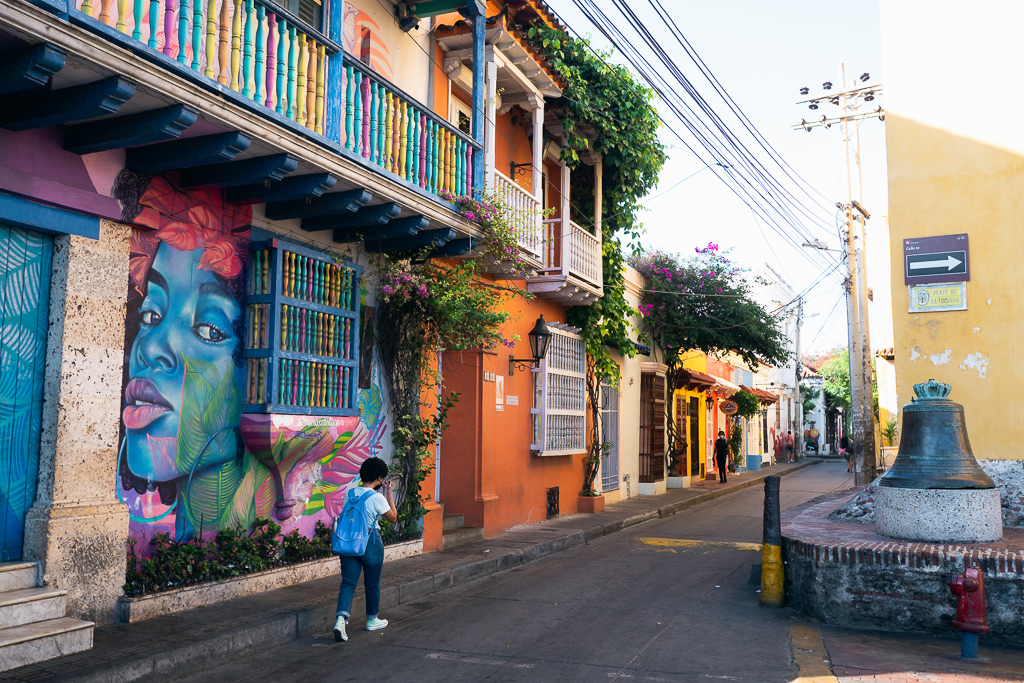
While its modern parts reminded me faintly of Miami with its high-rise condos along the waterfront, Cartegena also has one of the prettiest colonial town centres in South America.
Picture lots of quaint houses with flowers hanging from balconies and leafy squares where people play chess, and street vendors sell bananas and other fruits. The walls and fortresses that ring the town are worth a wander, offering some vantage points into the cobbled colonial-era streets below.
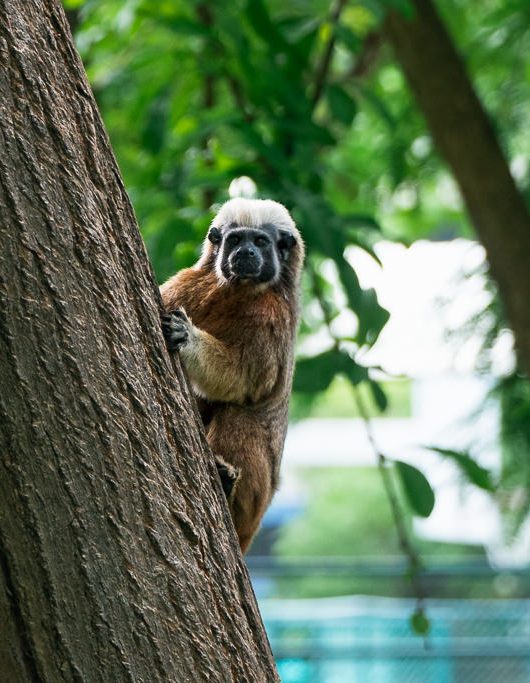
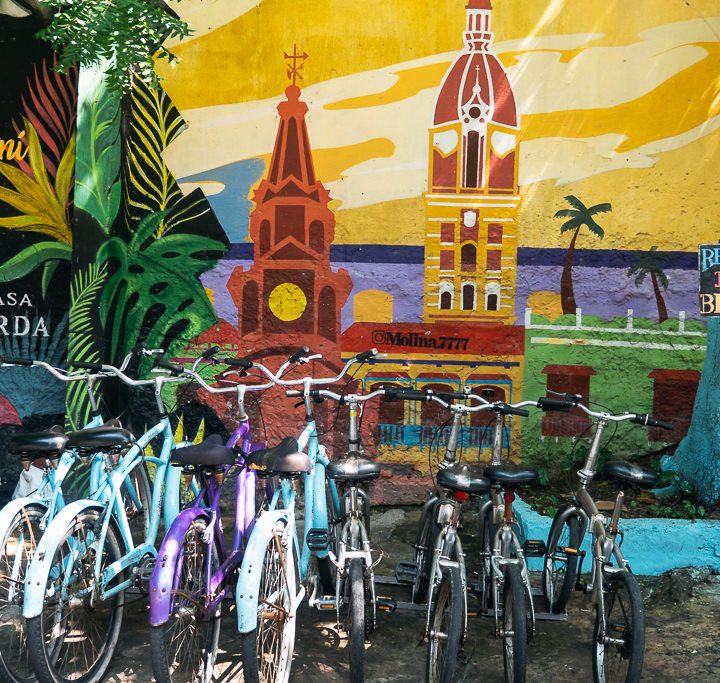
Budget travelers should know that photogenic Cartagena is essentially the tourism crown jewel of Colombia and so prices are quite a bit higher than elsewhere. The neighborhood of Getsemani — which was once a backpacker district, but now much more gentrified — still offers more budget options than inside the walled city.
Playa Blanca is a beautiful beach about an hour’s drive outside the city; it’s much better than any of the city beaches, so it’s worth the trip.
Float in Totumo Volcano mud baths

Okay, I won’t pretend this isn’t a silly tourist trap, but it’s too much fun not to mention.
A day trip from Cartagena, this mud volcano lets you swim inside it. The viscosity of the mud makes you float on top of the surface like you’re swimming in the Dead Sea. Sometimes you keel over and have to paddle like a dog to find your center of gravity again.
Look, whatever… just go do it. It’s hilarious.
Trek to the Lost City
The Lost City Trek is one of the best hikes I’ve done in South America. It takes 4 to 6 days, departing from Santa Marta. The trek runs through lands owned by the indigenous Kogi up to an ancient pre-Colombian city atop a mountain.
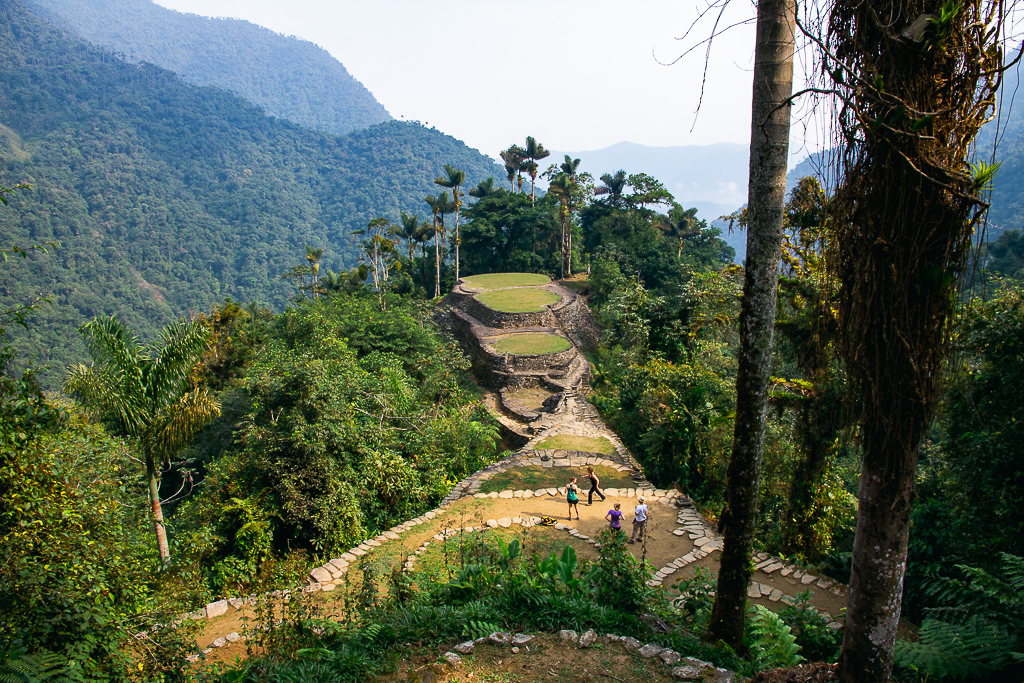


The ruins may not exactly be Machu Picchu, but they are not truly the point of this hike. The destination is just an excuse for the journey, which meanders along clear river streams and through lush green jungles.
You sleep in hammocks or bunks in primitive lodges—they’re just some roofs without walls, really, so you’re essentially sleeping out in the open save for your mosquito net. At night you’ll fall asleep to an orchestra of crickets, frogs, and monkeys.
Explore Tayrona Park

Is a 5 day hike a little too long for your itinerary? Then you’ll find some shorter walks in Tayrona National Park.
The 3-hour hike through the jungle to the ruins of Pueblito is one option, as is a hike to the beach of Cabo San Juan.
Tayrona Park itself has several beautiful secluded beaches and a chance to see a lot of wildlife. You can camp overnight inside the national park in Cabo San Juan and sleep in a hammock or tent.
Some backpackers do complain about the somewhat inflated prices for food and accommodation inside the park, though realistically you can overnight in Tayrona for as little as $20. It’s best to book your hammock or tent in advance though as spaces are limited.
Stay in Minca
Minca is a fascinating example of a destination that’s become ‘discovered’ by backpackers in just a few years. When I backpacked Colombia for the first time in 2012 no one had heard of Minca and everyone just stayed in Santa Marta or Taganga. When I went to Colombia again in 2022, Minca was all anyone would talk about. A new road had made this town more accessible and turned it into an ecotourism hotspot.
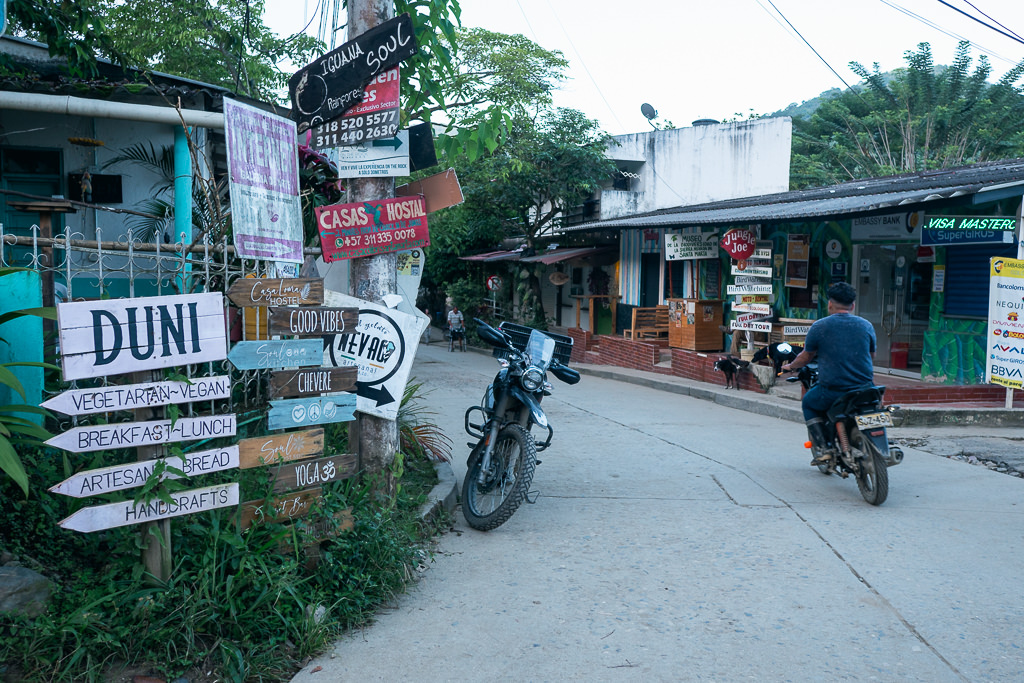
It’s in fact an amazing little place. The small mountain town itself is not so hugely remarkable, though it has some nice cafes and restaurants. But the most amazing areas are in the jungles around the town, offering epic views of the Sierra Nevada National Park.
There are lots of hostels in Minca with an amazing vibe. Everyone just comes to Minca to relax, to see tropical birds, to hike, or to ride a scooter around the mountain roads. I think it’s worth staying 3 nights at the least.
Don’t miss my guide for the best places to stay in Minca.
San Gil: the hub for adventure sports
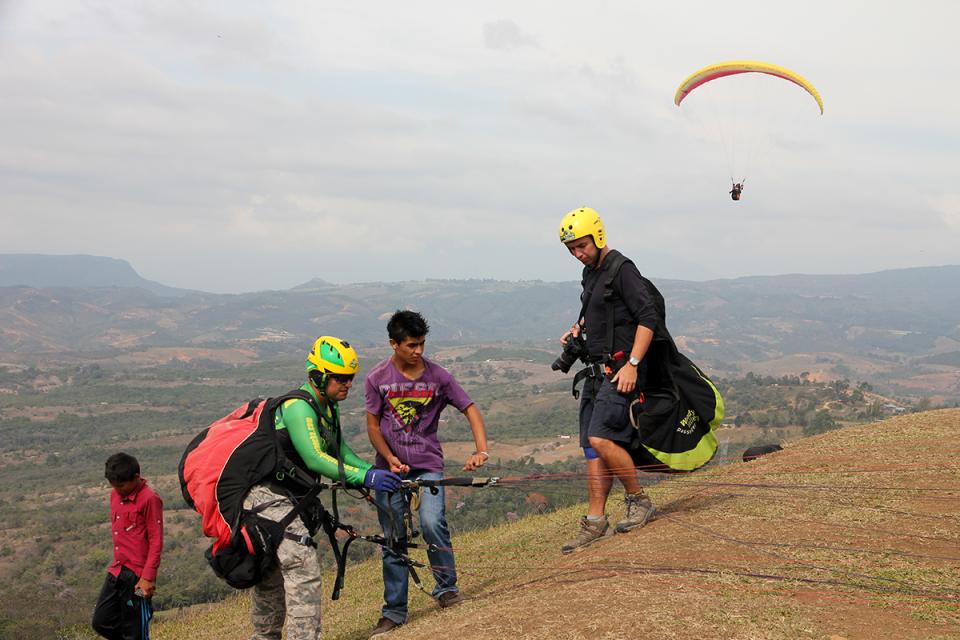
San Gil in the Santander region is Colombia’s capital of adventure sports. Go there for rafting (up to class 5 rapids, i.e. there’s some crazy rafting here), paragliding (starting at $40), kayaking, canyoning, mountain biking, and more. I did some tandem paragliding here which was great fun.
Besides the adventure activities, the town of San Gil is worth having a look at as well, which has some nice botanical gardens and vendors selling plates of fried giant-bottomed ants. They’re crispy and salty like popcorn. Om-nom-nom!
Visit the town of Barichara
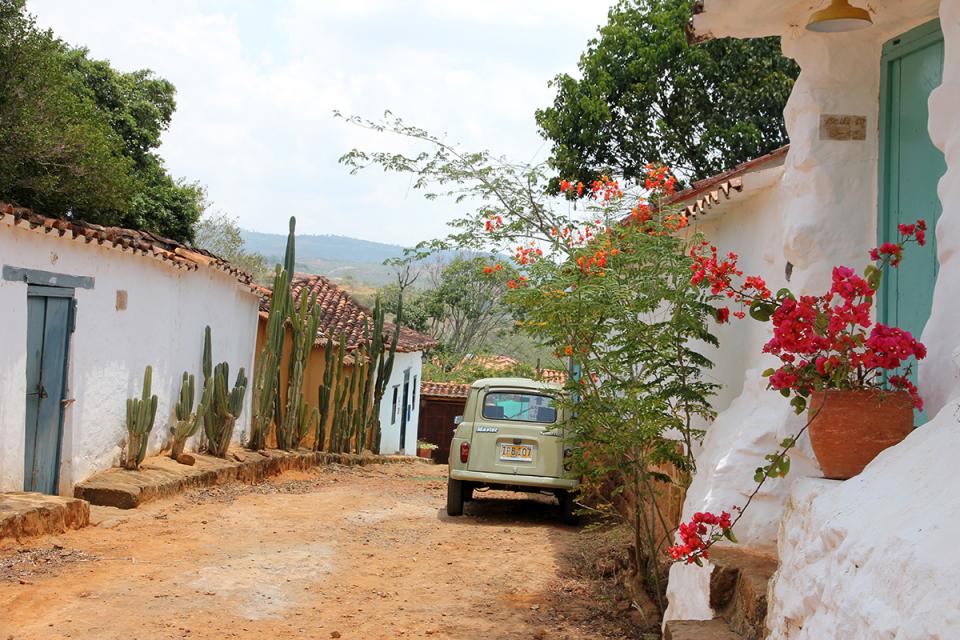
Barichara is a town in northern Colombia known for its cobbled streets and colonial architecture. It makes for a nice day trip from San Gil.
You’ll find some old churches and cemeteries, a few small museums, and a historical walking trail that takes about 2 hours and connects the picturesque towns of Barichara and Guane.
Discover cultural Medellin
Many big cities in Latin America can be a letdown as they tend to be chaotic and overwhelming. Medellin, on the other hand, has a real cultural heart that’s easy to love. It may look grungy at first glance, but give it another look and you’ll find a fascinating city to explore.
Its urban renewal over the past few years has been earning Medellin many international innovation awards, with squares that were once the sites of cartel battles now becoming thriving public spaces, one of them doubling as an open-air mini-museum featuring sculptures by Fernando Botero.
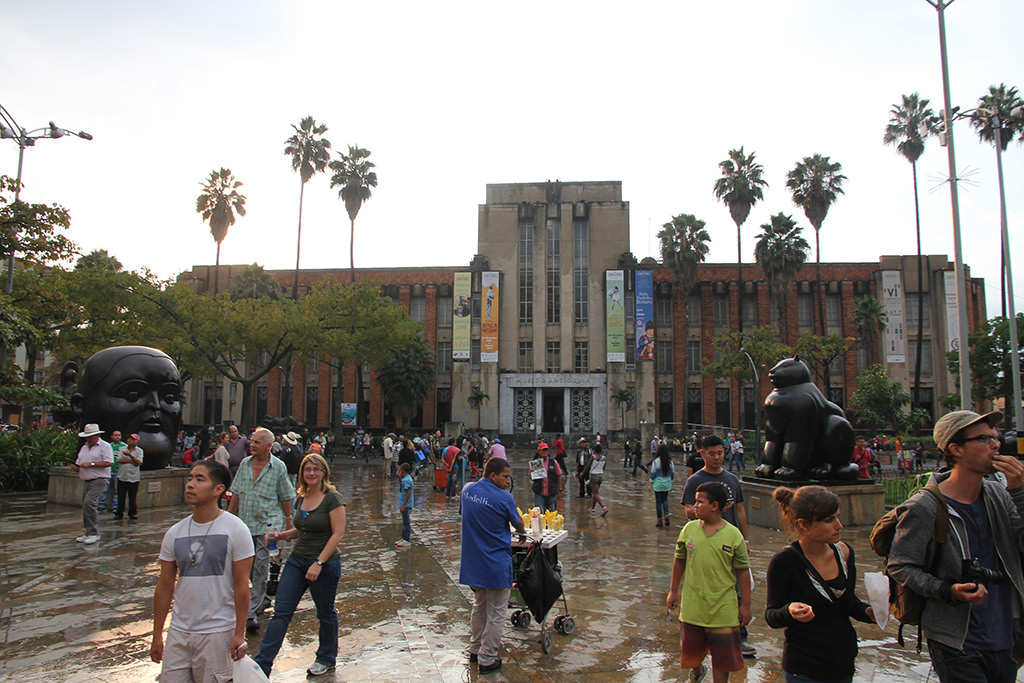
I recommend checking out the Plaza Botero, the Minorista market (a traditional farmer’s market), and Parque Lleras at night (a fun nightlife area where people spill out from the bars into the streets and patios). Be sure to ride the metrocable up to Parque Arvi, go to the Joaquin Antonio Uribe Botanical Garden, and visit the Medellín Museum of Modern Art as well. I can also highly recommend going on a tropical fruit tasting tour.
If you’ve got the chance to see a football match in Medellin, be sure to take it. The level of passion from the supporters is sure to leave an impression. Things can get very mosh-pitty when they score a goal though, so go with a little group if you can.
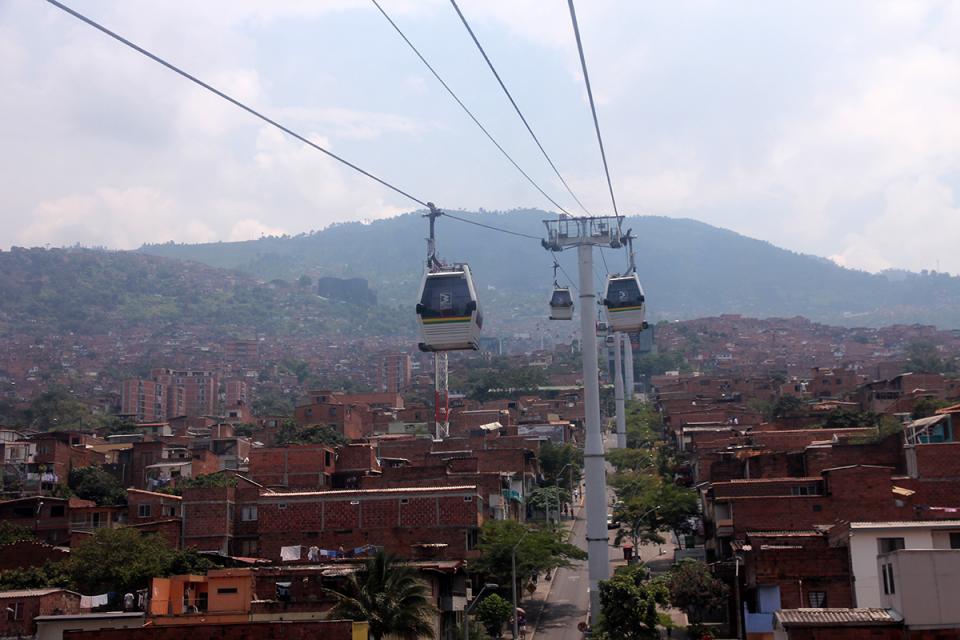
Many travellers stay in the Poblado area of Medellin, which is a high/middle-class residential neighborhood with a good reputation for safety, and within walking distance of the Parque Lleras nightlife as well. You’ll also find a high concentration of hostels and guesthouses in Laureles (and the adjacent Libertadores), which has fewer hipster cafes than Poblado and more of a local vibe. I enjoyed staying in both these neighborhoods.
If you want to learn more about Medellin’s past, go on the Real City tour. It’s one of the best city tours I’ve done anywhere. It tells you in very emotionally engaging ways about the history of the city and the country. After this tour, you’re guaranteed to feel a new emotional connection with Colombia and a deeper understanding of what’s happened here over the past few decades.
Climb the big rock of Guatape


A touristy but fun day trip from Medellin (perhaps even warranting an overnight stay) is the historical town of Guatape, famed for its colourful houses with beautifully sculpted depictions of village life adorning the lower half of every facade. There are some arts and craft shops, and some historical colonial-era churches.
But the main highlight is Piedra del Peñol. This unusual rock formation was once worshipped by the indigenous tribes and given the imposing look of this monolith it’s easy to see why. You can climb stairs to the top from where you have a great view of the surrounding lakes.
Guatape is a bit of a resort town for Colombians, so around the rock you’ll also find a range of tourist activities such as boat tours around the lakes and extreme sports such as hang gliding and jet skiing.
City tours & museums in Bogota

The capital of Bogota has a lot of things to see and do, but I’d recommend doing several things in particular. First, go on a Bogota bicycle tour. You’ll be able to cover a lot of ground and gain a greater understanding of the city.
You’ll see things you usually wouldn’t see: for instance, why are all these shady-looking men loitering outside this one particular building? Turns out they are grey-market emerald dealers trying to offload their gemstones to the highest bidder. You’ll see some of the city’s most eye-catching street art as well, and get to sample unusual tropical fruits at the local market.
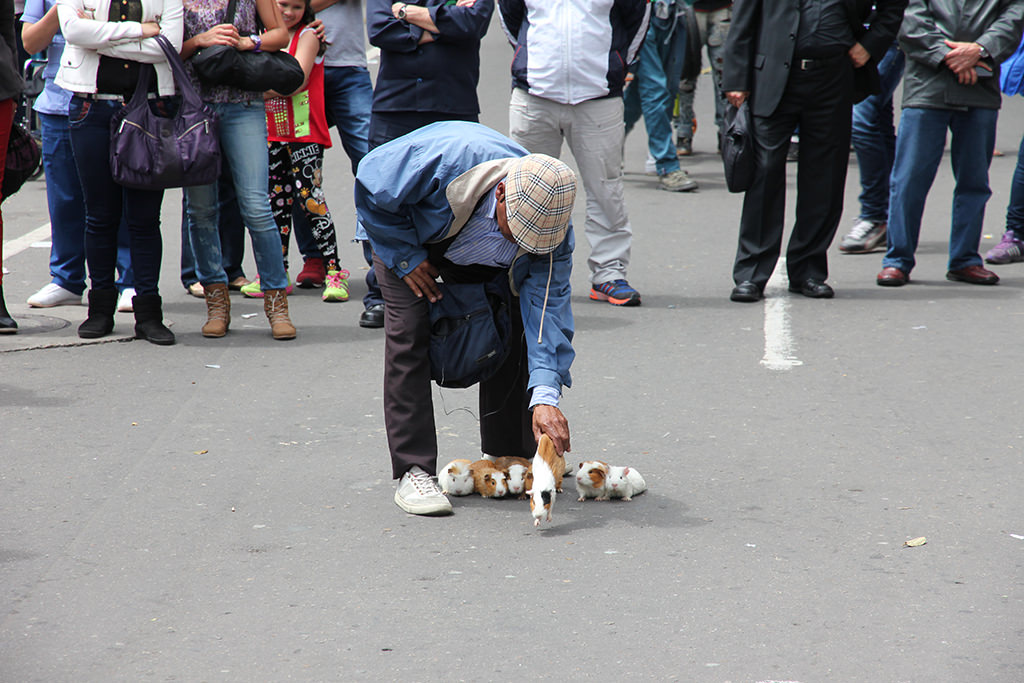
Bogota also has a large number of museums. Don’t miss the Botero Museum and the National Museum, and especially the Museo de Oro (Gold Museum) which has a stunning collection of pre-Columbian gold artefacts.
Finally, it’s worth taking the cable car to Monserrate Mountain, from where you get a superb view of the city below.
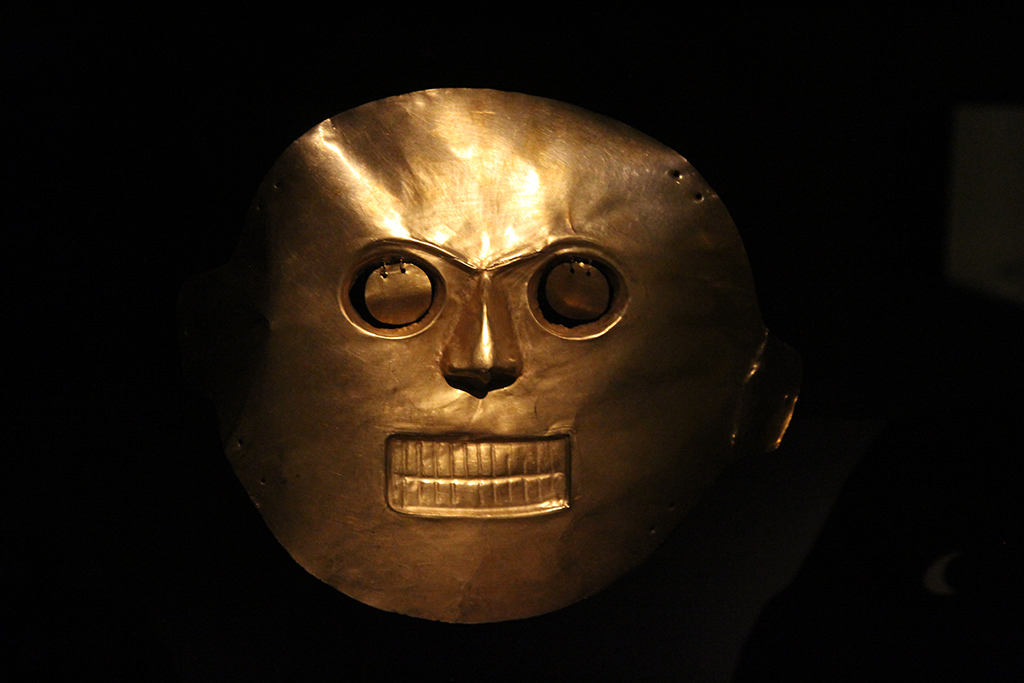
Coffee farms in Salento
The small town of Salento in Colombia’s coffee region is a great spot to stay for a few days. After spending time in the cities, you may just wish to wind down for a while in this slow-paced rural place (though it’s been getting more crowded in recent years).
Tours of some of the local organic coffee farms can educate you about the coffee growing and roasting process, though there is much more to see and do in Salento.

Make sure you hike to the Cocora Valley, home to some gasp-inducingly tall wax palm trees.
Growing up to 70 meters, they’re claimed by some to be some of the tallest in the world. The hike starts along a mountain stream, crosses over some old swing bridges, and passes through some cloud forests (don’t miss the hummingbird sanctuary), before finally reaching the valley with the imposing palm trees.
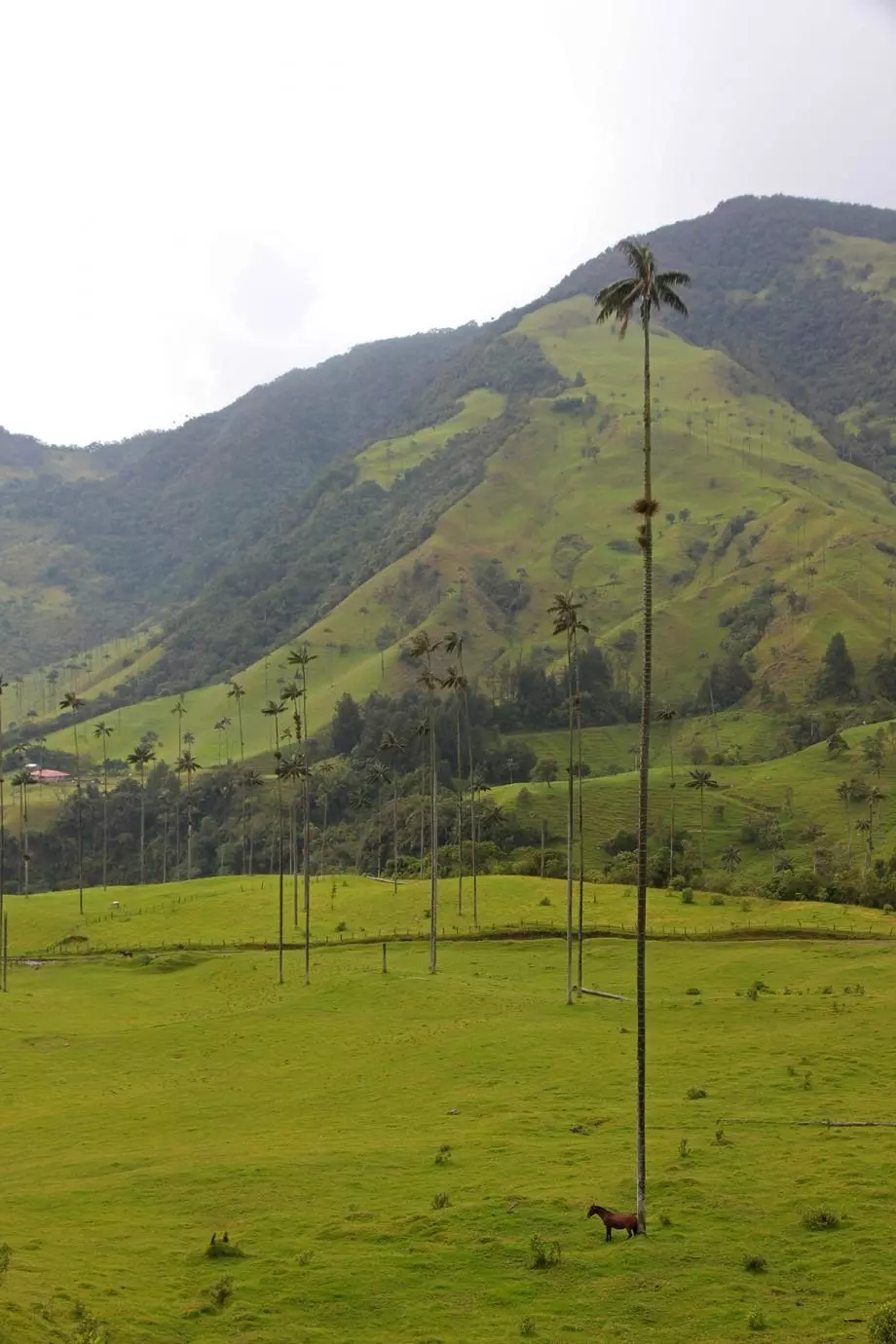
The area is also a favorite place to go trekking or horseback riding. A fun thing you can do in town during the evening is to play Tejo, a traditional Colombian game that involves throwing metal balls at a target lined with gunpowder. It’s good explosive fun!
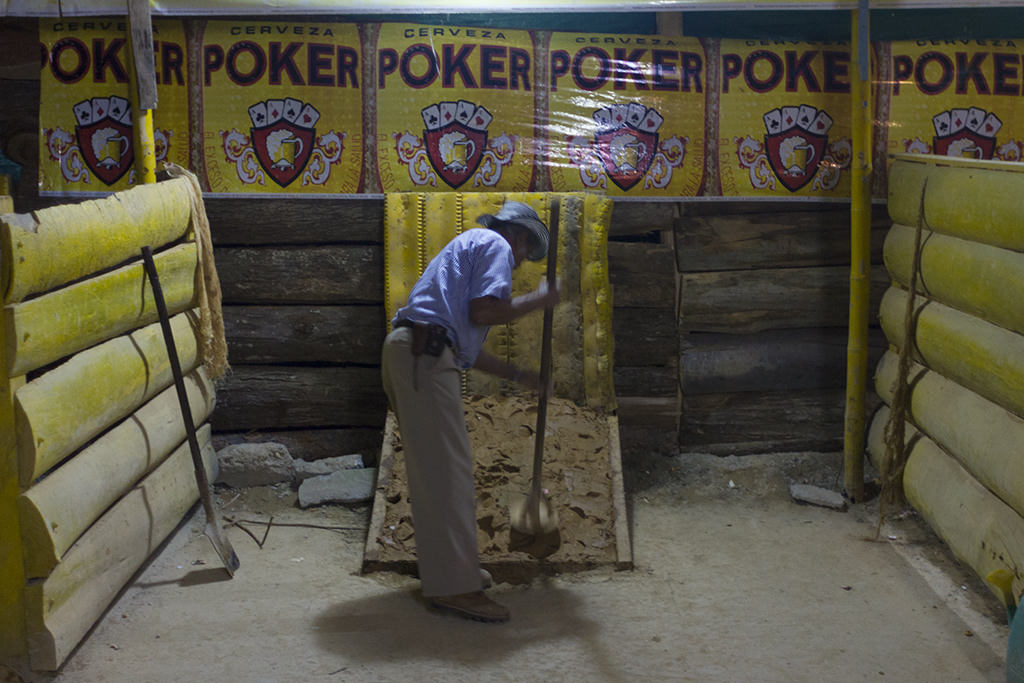
Stargaze in Tatacoa desert
The Tatacoa Desert, not far from the southern city of Neiva, is one of the hottest places in Colombia. You’ll find yourself in the middle of an arid expanse, home of vultures and eagles, with the start of the Andes mountain range off in the distance.
A labyrinth of rocky canyons formed by years of erosion is the main attraction here — it’s a surreal little place that’s fun to get lost in.
Due to the low light pollution, it’s also a perfect spot for stargazing. A resident astronomer gives presentations every night, which were unfortunately hard for me to follow with my limited Spanish. But he did say “Goopitar” a lot (I think that was Jupiter), and he probably said some things about the expansion of the universe. Either way, I got to see the rings of Saturn through a telescope, which was amazing.

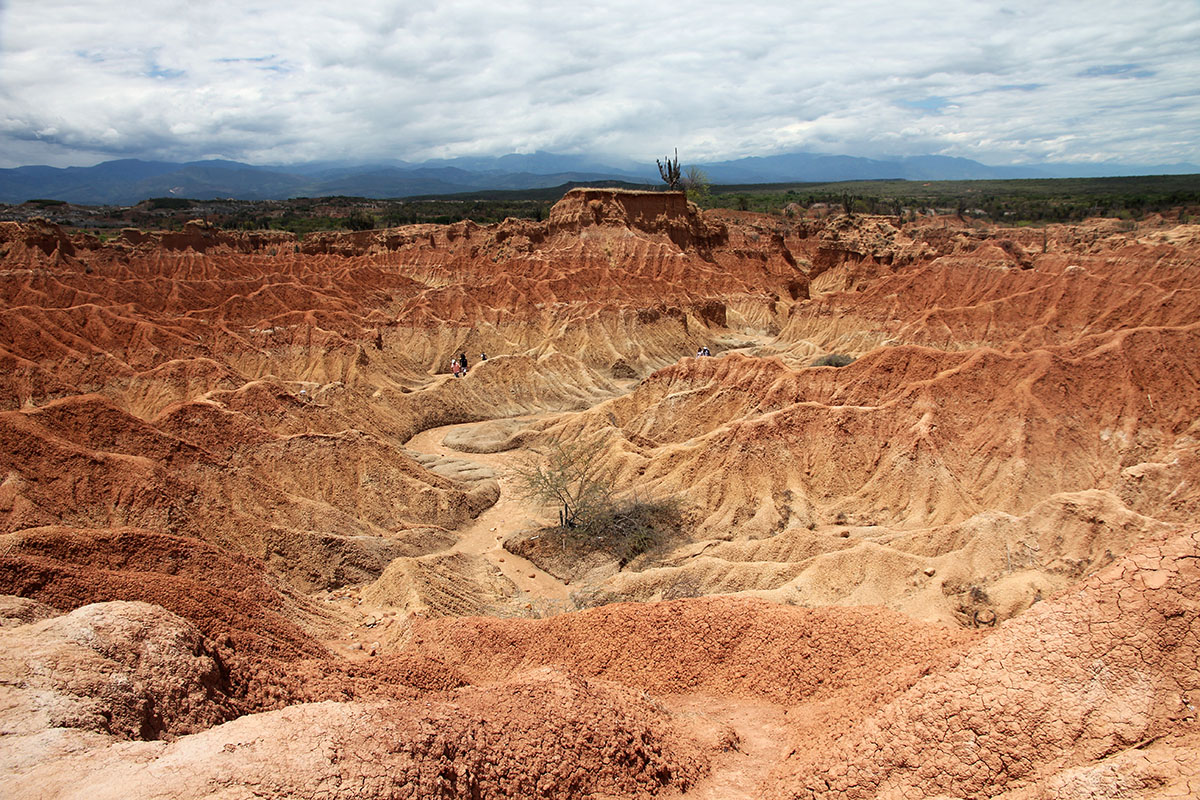
Some links may be affiliate links, meaning I may earn commission from products or services I recommend. For more, see site policies.
